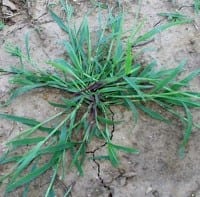Healthy eating can happen with one step at a time. It can be simple!
The U.S. Department of Agriculture has released a new initiative to help consumers meet their health goals. It is called Start Simple with MyPlate.
Focus on whole fruits. Add fruit to a bowl of cereal for breakfast or grab one for an easy snack. Don’t forget that canned and frozen fruits are great choices when your favorite fresh fruit is not available.
Vary your veggies and think colorfully! Dark green, red, orange, yellow and other colorful veggies add lots of good nutrients to any meal or snack. Prepare extra veggies for a side dish or to use in soup or pasta.
 Make half your grains whole grains. This message still holds true! Choose 100% whole grain bread, pasta, crackers, or cereal.
Make half your grains whole grains. This message still holds true! Choose 100% whole grain bread, pasta, crackers, or cereal.
Vary your protein routine. Meat, poultry, fish, seafood, legumes are beneficial. Don’t forget to serve veggies and whole grains with your protein choice!
Low-fat or fat-free dairy foods compliment any meal. Be a role model for kids to show dairy foods are healthy!
Learn more at www.choosemyplate.gov/start-simple-myplate.
By: Ashley Svaty
 Do you want a jump start on your lawn maintenance this year? If you want to be the envy of all your neighbors, and have the greenest lawn on your block join us for Kansas Lawn Care Basics. K-State Specialist, Jared Hoyle, will teach us about seasonal lawn care, weed management, and Buffalo and Fescue grass care! Join us Thursday, April 18 at 7:00, at the Guaranty State Bank in Beloit, Kansas. Free to participate but please RSVP to the Post Rock Extension Office at (785) 738-3597
Do you want a jump start on your lawn maintenance this year? If you want to be the envy of all your neighbors, and have the greenest lawn on your block join us for Kansas Lawn Care Basics. K-State Specialist, Jared Hoyle, will teach us about seasonal lawn care, weed management, and Buffalo and Fescue grass care! Join us Thursday, April 18 at 7:00, at the Guaranty State Bank in Beloit, Kansas. Free to participate but please RSVP to the Post Rock Extension Office at (785) 738-3597 Young children seem to behave in challenging and confusing ways. Behavior is communication. When we take time to observe and analyze a child’s behavior we can better understand what they are “telling” us. Checkout some tips, helpful for parents and educators, shared by the National Association for the Education of Young Children (NAEYC).
Young children seem to behave in challenging and confusing ways. Behavior is communication. When we take time to observe and analyze a child’s behavior we can better understand what they are “telling” us. Checkout some tips, helpful for parents and educators, shared by the National Association for the Education of Young Children (NAEYC). Have you struggled with weeds in your lawn, flower beds, and garden? Crabgrass is a very common Kansas weed that seems to thrive in our hot summer weather. Get ahead of weeds this year by applying a preemergent herbicide. The best time to apply is around the middle of April or when the Redbud trees in your area start to bloom.
Have you struggled with weeds in your lawn, flower beds, and garden? Crabgrass is a very common Kansas weed that seems to thrive in our hot summer weather. Get ahead of weeds this year by applying a preemergent herbicide. The best time to apply is around the middle of April or when the Redbud trees in your area start to bloom. About 40 percent of food grown in the United States goes uneaten. On average, Americans toss and waste 23 pounds of potentially edible food per person each month. At this rate, food waste is costing the average family of four approximately $190 per month! Food waste not only is hard on our pocketbooks but also challenges our natural resources. Use the tips below and use our latest
About 40 percent of food grown in the United States goes uneaten. On average, Americans toss and waste 23 pounds of potentially edible food per person each month. At this rate, food waste is costing the average family of four approximately $190 per month! Food waste not only is hard on our pocketbooks but also challenges our natural resources. Use the tips below and use our latest 